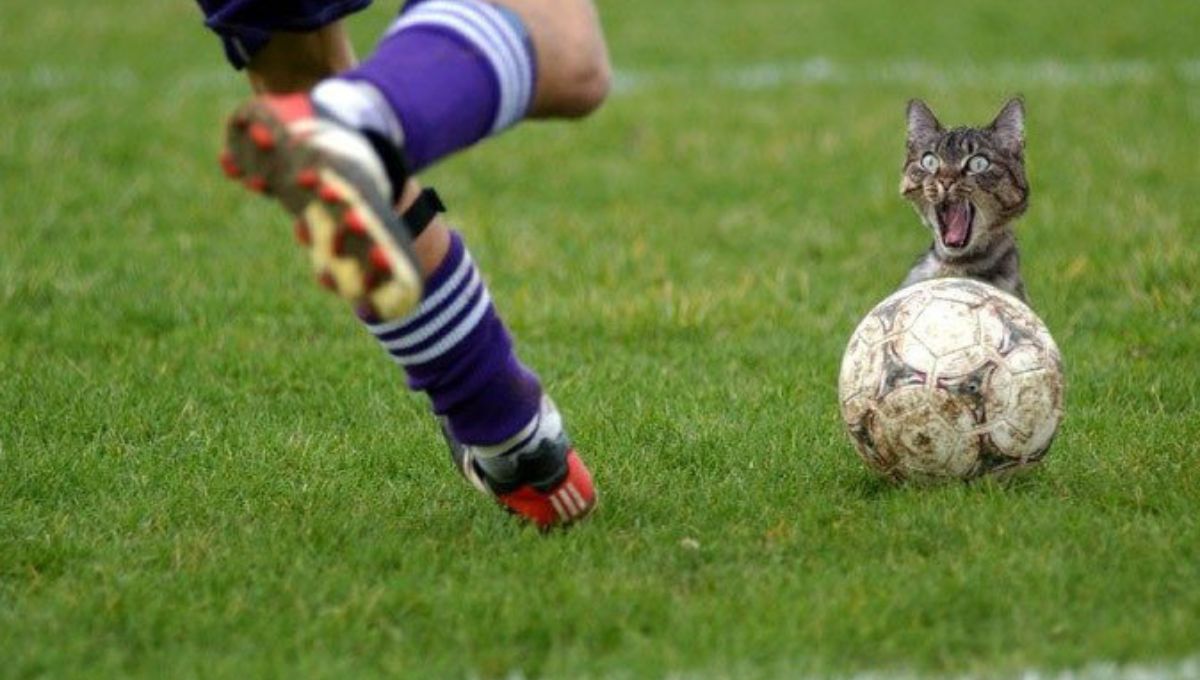Football is a game that demands intelligence, skill, and peak physical fitness. Players must not only cover massive distances on the pitch but also out think their opponents tactically. Despite its structure and strategy, football has some surprisingly strange rules that even passionate fans often aren’t fully aware of.
In this blog, we’ll dive into 11 weird football rules that might just surprise you:
1. The Offside Rule
For newcomers, the offside rule is notoriously confusing.
A player is offside if, at the moment the ball is passed to them, they are closer to the opponent’s goal than both the ball and the second-last defender.
However, there are a few key exceptions:
- A player cannot be offside if they are in their own half of the field when the ball is played.
- There is no offside from a throw-in, corner kick, or goal kick.
- If the goalkeeper is out of position, attackers must still stay behind two opponents (which could be two outfield players) to remain onside.
2. Extra Substitute for Concussions
In the past, football did not allow any special substitutions for injuries like concussions.
Today, if a player suffers a concussion or suspected head injury, the team can make one additional substitution that doesn’t count toward the regular five allowed.
This change puts player safety first — immediate replacement can prevent further brain trauma.
Other sports, like cricket, implemented concussion substitutes earlier, notably after the tragic death of Australian cricketer Philip Hughes.
3. Penalty Kick Rules You Didn’t Know
We all know the basics of a penalty kick:
- The ball must be stationary.
- The kicker can’t touch it again until another player does.
- Goalkeepers must stay on their line until the ball is kicked.
However, a weird twist:
If a player accidentally kicks the ball twice during the penalty, the goal is disallowed, the player receives a yellow card, and there is no retake. It’s a harsh punishment for a simple mistake!
Also, keep in mind:
- Goalkeepers must have at least one foot on the goal line when the ball is struck.
- Moving forward before the kick is illegal and can lead to the penalty being retaken.
4. The Throw-In Rules
When performing a throw-in:
- Both feet must stay on or behind the touchline.
- The ball must be thrown with two hands over the head.
What’s odd?
If a player lifts even one foot off the ground during the throw, it’s a foul throw — and possession goes to the opposing team! It feels harsh, but it’s designed to keep throws fair.
Additionally:
A player cannot touch the ball again until someone else does after a throw-in.
5. You Can Score From a Corner Kick, But Not a Throw-In
One of the strangest football rules:
- You can score directly from a corner kick.
- You cannot score directly from a throw-in.
If a throw-in somehow goes straight into the opponent’s goal without anyone touching it, it’s disallowed. Instead, the opposing team gets a goal kick.
It’s often argued that throwing a ball into the goal would actually be harder than scoring from a corner, making this rule seem unnecessary!
6. Yellow Card for Removing Your Shirt
Many fans find this rule baffling: removing your shirt during a goal celebration earns an automatic yellow card for “unsporting behavior.”
The reason?
Authorities say excessive celebrations can spark violence, provoke opponents, or waste time.
Interestingly, referees can choose not to book a player if the shirt is removed for medical reasons or important causes like honoring someone on a tragic death.
▶️ See how Mohammed Kudus honored Christian Atsu without being carded:
7. Handball Exceptions
Handball rules seem straightforward but have important exceptions:
- If the ball accidentally hits a player’s hand while it’s close to their body (natural position), it’s not a foul.
- If the contact doesn’t lead to an advantage, referees often let play continue.
This flexibility is intended to distinguish between intentional and accidental handballs.
8. No Game Without Corner Flags
Without corner flags, an official football match cannot start!
Corner flags are critical for:
- Marking field boundaries clearly.
- Signaling where corner kicks are taken from.
- Adding to the traditional look and atmosphere of the game.
They aren’t just for decoration — they ensure fairness and proper officiating.
9. Opponents Can Restart Play During Goal Celebrations
If an entire team leaves the field to celebrate a goal, the opposing team can legally restart play!
Why?
- It discourages excessive, time-wasting celebrations.
- It helps keep the game flowing.
- It also prevents potential security risks when too many players interact with the crowd.
10. The ‘Triple Punishment’ Rule
The so-called “triple punishment” happens when a player:
- Commits a foul inside their own penalty area.
- Denies a clear goal-scoring chance.
- Receives a red card, concedes a penalty, and faces a suspension.
This rule was widely criticized for being too harsh, and FIFA later adjusted it: if the foul is an attempt to play the ball (not reckless or violent), the player may now only receive a yellow card instead of a red.
11. Goalkeepers’ 6-Second Rule
Goalkeepers can only hold the ball for six seconds after gaining control.
There’s some confusion:
- The three-step rule (only taking three steps while holding the ball) was abolished long ago.
- Today, it’s purely a time-based rule — six seconds, no matter how many steps.
This prevents goalkeepers from wasting time and slowing down the game.
Also Read:
👉 [The 17 Laws of Football: A Complete Guide]
